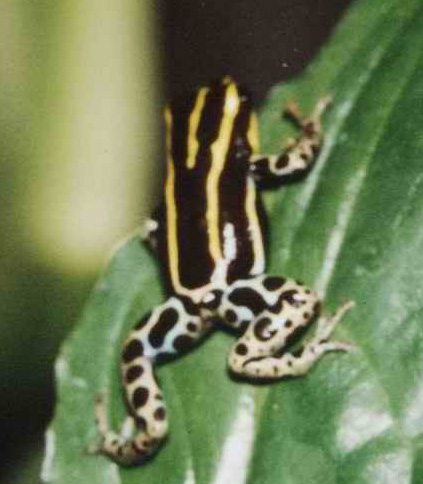| HOW TO BREED FROGS FROM DENDROBATIDAE GENUS |
| ||| Welcome ||| Where We Are ||| Gallery ||| Contact Us ||| |
 Within this genus you can find tiny frogs of various colour. Their length ranging between 15 and 60 mm.
Within this genus you can find tiny frogs of various colour. Their length ranging between 15 and 60 mm.They originally come from a wide area in America going from the south of Nicaragua to Bolivia in Southern America. Their natural habitat is rainforest and you can find them up to 1.000 meters above sea level. For breeding we use tanks of the following dimensions: 70*60*50 cm. It is advisable to plant a variety of plants there to achieve high air humidity (70 - 95%). The plants we use are Java moss, Peperomias, Anthuriums, some kinds of orchids, Bromelias etc. We find these plants very successful. As a substrate we use aquarius sand or ceramic materials are more in use nowadays. There should be a small dish with water - approx. 3 cm deep. The water HAS to be chlorine free: to achieve this let the water stand at least for 24 hours before use. The length of lighting should be about 11 - 12 hrs a day. The most convenient lights are fluorescent lamps that are capable of heating the whole tank as well as they support the growth of plants well. The temperature in tanks should be between 22 - 28įC with tiny night deviation. To feed the frogs we recommend young crickets, fruit flies, aphids and other small insects available. All food should be dusted with a mixture of milled eggshells and a mixture of calcium, phosphor, magnesium and some basic vitamins (D, B, A etc.) in proportion one to one. Young frogs should be fed daily and adult frogs twice a week. To breed the frogs there is a couple of possibilities. We can either let the male frog take care of the frogspawn or we can put the frogspawn into a Petri dish with a little water in it. From spawn to a tadpole it takes about 14 days (depending on species and temperature) at a temperature of 20 - 25įC. |